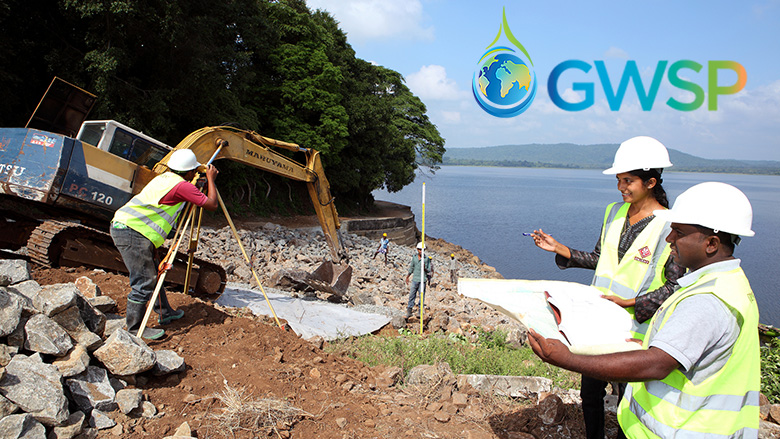GWSP Toolkit Series
1. Financing the SDGs
2. Building Sustainable Utilities
3. Policies, Institutions and Regulation
Building Sustainable Water Utilities
For more than 20 years the World Bank has been grappling with how best to help clients build sustainable utilities – that provide good quality, affordable, services that can meet the needs of ever growing and ever more demanding customers.
Early Approaches Toward Autonomy
Early approaches included corporatization of state owned enterprises and the use of tariff covenants in projects – believing that increased financial and managerial autonomy would provide the opportunity for utilities to thrive. When this failed to produce the expected results, there was a push towards more private sector involvement in the financing and management of service providers. Various toolkits were produced by PPIAF, and have since be updated, but results were mixed. Improved understanding and examples of regulatory activities proceeded in parallel.
Taking Stock: Benchmarking and Assessments
However, with more than 90% of service providers publicly managed, practitioners in the early 2000s looked to better understand the key characteristics of well-run public water companies, established a benchmarking database to allow comparison of performances, investigated opportunities for aggregation, undertook studies on governance and summarized lessons from successful reforms.
Renewing the Conceptual Framework: Institutions, Financing, Climate Change
This body of knowledge provided task teams with tools and information to better engage with clients but there were still many shortfalls in understanding. A big push was initiated in 2014 to drive the knowledge agenda forwards on multiple fronts. Utilities needed to be placed within their policy, institutional and regulatory environment, new sources of financing had to be mobilized to meet the demands of the SDGs, climate change was driving a need for greater resilience, and new models for engaging with the private sector were overdue (forthcoming publication).
Turning Concepts into Practical Solutions
Utility managers (and the task teams supporting them) needed tools to go beyond concepts into practical solutions. This led, most recently, to the development of the utility turnaround framework (a structured analytical approach with costed solutions), the water utility aggregation toolkit, and guidance notes/contract documentation on the use of performance-based contracts to reduce non-revenue water and delivering new treatment facilities using Design, Build Operate contracts.

REFERENCES (in order of appearance in the summary)
Early Approaches Toward Autonomy
- PPIAF Toolkits
- Public-Private Partnerships Reference Guide, Version 2.0, 2014 © World Bank, Asian Development Bank and Inter-American Development Bank.
- Marin, Philippe. 2009. Public-Private Partnerships for Urban Water Utilities: A Review of Experiences in Developing Countries. Trends and Policy Options; no. 8. World Bank. © World Bank.
- “Ehrhardt, David; Groom, Eric; Halpern, Jonathan; O'Connor, Seini. 2007. Economic Regulation of Urban Water and Sanitation Services: Some Practical Lessons. Water Sector Board discussion paper serie ;no. 9. World Bank, Washington, DC. © World Bank.
- Groom, Eric; Halpern, Jonathan; Ehrhardt, David. 2006. Explanatory Notes on Key Topics in the Regulation of Water and Sanitation Services. Water Supply and Sanitation Sector Board discussion paper series no. 6. World Bank, Washington, DC. © World Bank.
Taking Stock: Benchmarking and Assessments
- Baietti, Aldo; Kingdom, William; van Ginneken, Meike. 2006. Characteristics of well-performing public water utilities Water Supply and Sanitation working notes ; no. 9. Washington, DC: World Bank. © World Bank.
- Locussol, Alain; Ginneken, Meike van. 2010. Template for assessing the governance of public water supply and sanitation service providers Water working notes; no. 23. Washington DC; World Bank. © World Bank.
- Locussol, Alain R.; Fall, Matar; Dickson, Eric; Locussol, Alain R.; Fall, Matar; Dickson, Eric;. 2009. Guiding principles for successful reforms of urban water supply and sanitation sectors. Water working notes; note no. 19. Washington, DC: World Bank.
IBNet. The International Benchmarking Network https://www.ib-net.org
- World Bank. 2005. Models of aggregation for water and sanitation provision. Water Supply and Sanitation working notes ; no. 1. Washington, DC: World Bank.
- World Bank Group. 2017. Joining Forces for Better Services : When, Why, and How Water and Sanitation Utilities Can Benefit from Working Together. World Bank, Washington, DC. © World Bank.
Renewing the Conceptual Framework: Institutions, Financing, Climate Change
- Mumssen, Yogita; Saltiel, Gustavo; Kingdom, Bill. 2018. Aligning Institutions and Incentives for Sustainable Water Supply and Sanitation Services. World Bank, Washington, DC. © World Bank.
- Kolker, Joel Evan; Kingdom, Bill; Trémolet, Sophie; Winpenny, James; Cardone, Rachel. 2016. Financing Options for the 2030 Water Agenda. Water Global Practice Knowledge Brief;. World Bank, Washington, DC. © World Bank.
- Markandya, Anil. 2017. State of Knowledge on Climate Change, Water, and Economics. Water Global Practice Discussion Paper;. World Bank, Washington, DC. © World Bank.
- Goksu, Amanda; Trémolet, Sophie; Kolker, Joel; Kingdom, Bill. 2017. Easing the Transition to Commercial Finance for Sustainable Water and Sanitation. World Bank, Washington, DC. © World Bank.
Turning Concepts into Practical Solutions
- Soppe, Gerhard; Janson, Nils; Piantini, Scarlett. 2018. Water Utility Turnaround Framework : A Guide for Improving Performance. World Bank, Washington, DC. © World Bank
- Toolkit on the Aggregation of Water Supply and Sanitation Utilities.
- Kingdom, Bill; Sy, Jemima; Soppe, Gerhardus. 2018. The Use of Performance-Based Contracts for Nonrevenue Water Reduction: Output of the Global Program on Developing Good PBC Practices for Managing NRW. Washington, DC: World Bank. © World Bank.
- Design, Build and Operate (DBO) Water and Wastewater Treatment Plants; Initial Selection [October 2017].
